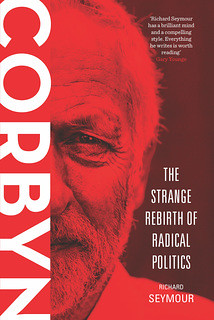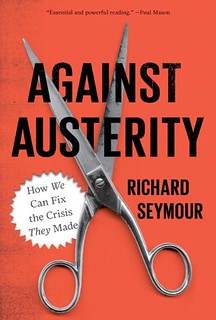"That truly Kafkaesque Castle, the modern state." -- Nicos Poulantzas.
I. In ‘
The Castle’, it is never entirely clear what is happening.
There are officials who appear to govern. No one knows what they do, exactly. The only thing that gives them any sort of definition, any sort of concreteness, is the snow-bound castle at the centre of the village, from which they govern.
This is the outward face of the bureaucracy. In the story, it appears at first as a void. This blank, silent screen encourages the inhabitants to project their own fantasies onto authority, so that they all entertain elaborate, inconsistent theories about what authority is actually doing.
The main fantasy is one of omnipotence. Their paperwork, the authorities claim, is perfect, without flaws. In reality, as with any bureaucracy, it is riddled with dysfunctions, which are dealt with through expedients such as, for example, burning papers.
The guarantor of the centralised unity of the Castle, its seamless perfection, is its worshipped ruler, the Count. But, as Kafka’s notes show, and those ruled by the Castle are unaware, the Count is dead. It is the supposed — hypothesised — omnipotence of the Castle which ensures that it continues to be obeyed. But it is also that same supposition which ensures that rules of authority make no sense, and impose impossible demands, since they can never be challenged.
If the Castle weren’t a physical object, we would have to ask what it is. And since, in the story, it stands metonymically for the authority, which isn’t a physical object, we’re still none-the-wiser. The authority, it seems clear enough, is a state. But what is a state? A state is something of a mystery.
II. Neither the policeman nor the truncheon, neither a subject nor an object, the state refuses to resolve into clear boundaries.
Thinking it through, what are the experiences we have of the state? Job centres, traffic wardens, council offices and hospitals. Schools, soldiers and army barracks. Police and police stations. Birth and death certificates. Road sweepers, rubbish bins and tax collectors. Border patrol and building inspectors. Laboratories, land surveyors and labyrinths. Speeds signs and spending targets. Parks, palaces and parliaments.
Banks and corporations are entities provided for, legalised, by the state. Work is conducted and remunerated within a framework provided by the state. Sex is had, or not had, under the law of the state. Ingestion and egestion are functions regulated by the state. The scope of state activity is vast, ranging from end to end of the territory, from the sewers to the seas and skies.
What single logic, what single necessity, what single function or structure, holds all of this together? We can think of the Castle in this context as part of the theatrics of the state, much as the changing of the guard, or a presidential speech to a joint session of congress, or an inquiry or inquisition, are theatrics. They produce an image of the state which appears to justify the use of the definite article.
If we didn’t have these theatrics, we wouldn’t know what the state was.
III. As the plight of Kafka’s villagers makes obvious, knowing what the state is, isn’t much help. This knowledge is a fantasy. If we start by not knowing what the state is, we will get a little bit further.
Peter Bratsis, drawing on Gaston Bachelard’s Psychoanalysis of Fire, argues that “the state idea” is a bit like pre-scientific ideas of fire. A flame appears to be some sort of object or essence, and it has “palpable confirmations” — light and heat — that appear to support this idea. This gives rise to substantialist or animistic ideas about fire, wherein it is believed to be some sort of spirit or essence. Once the idea is established, it shapes how we register the palpable experience of fire, such that it is very difficult to let go of the idea.
The way out of this impasse was to analyse flame, not as a thing in itself, nor as a spirit, but as an outcome of certain physical processes. Only the analysis of these processes can tell you what fire is. Likewise, if we want to understand what a state is, we have to start with the processes.
This is, obviously, an argument for Nicos Poulantzas’s approach, in State, Power, Socialism, which describes the state as only the effect, the outcome, of those immense, complex processes of social production, reproduction, and contestation, which are summed up in the marxist phrase, “class struggle”. The state, in this sense, is a particular “material condensation of the balance of class forces”.
The thought is similar to Foucault’s contention, in The Birth of Biopolitics, that “the state does not have an essence”. Far from being “an autonomous source of power” in itself, it is:
“nothing else but the effect, the profile, the mobile shape of a perpetual statification or statifications, in the sense of incessant transactions which modify, or move, or drastically change, or insidiously shift sources of finance, modes of investment, decision-making centres, forms and types of control, relationships between local powers, the central authority, and so on. In short, the state has no heart, as we well know, but not just in the sense that it has no feelings, either good or bad, but it has no heart in the sense that it has no interior. The state is nothing else but the mobile effect of a regime of multiple governmentalities.”
Mark that: the state “has no interior”. The Castle has no heart, dark or enlightened.
IV. To leave it here would be to imply that the “state idea” is just an illusion and nothing more. But even in the Castle, that isn’t true. The idea has real effects in the organisation of power, and is made real in a sense through its effects.
In a recent
book, Bratsis warns against the temptation to “take it literally.” Although he doesn’t say so, this could imply that the “state idea” is a kind of metaphor. As Raymond Williams tells us in
Keywords, the modern term ‘state’ has origins in the conception of rank linked to political sovereignty: the dignity and status of the king. It came, through the seventeenth century, to be distinguished from another term, society, which represented an alternative order of being. The state came to signify the apparatus of political power, and society the association of free individuals.
To this we could add reference to the peculiar etymology of the term “body politic” which in the medieval period was the second body of the monarch next to the frail physical body. For much of the time, this was treated literally, in law, in that the body politic was considered a real manifestation of the king’s corporeality. In the modern sense, the body politic simply refers to the realm, the domain of rule and governance.
So, the “state idea” contains embedded within itself the idea of rank and hierarchy, the idea of sovereign power separate from society, the idea of a body consubstantial with that of the king, and the idea of a realm. And all of these ideas have played an important role in the history of state formation, the elaboration of jurisprudence, the allocation of rights, the organisation of territory, and so on.
V. In The Castle, ‘all’ that is happening is a series of bureaucratic processes which organise political power.
The Count doesn’t really rule: he is dead, his body is decomposing. That things go on as they were suggests that the Count was only necessary as a signifier, as a social location that people could believe in — or that they could at least believe others believed in.
Nonetheless, there is centralisation, there is hierarchy, there are chains of command and flows of information. As fissiparous and dysfunctional as the processes of the Castle are, the idea that the Count rules and that the system works perfectly, organises the processes of government.
But if the Count is dead, on whose behalf do the officials rule? Not ‘the people,’ surely? They are kept ignorant and excluded from power. Not themselves? They could do a lot better with their rule than organising this absurdist paper-chase. They, ultimately, are subject to the same ludicrous law as everyone else, even if they occupy a special rank.
The state is always a state under law. And law is what, exactly? It is, you could say, the dominant ideology in any society, exhaustively distilled into a series of axioms determining how things shall be done, and not done, articulated with the means of violence. The law is where the consent-coercion dichotomy breaks down, since the refusal to consent is met with physical force.
Being ideology, there is nothing intrinsically rational about legal axioms or the more-or-less predictable chains of juridical reasoning unfolding from them. Nor is there anything universally true about them. However, law selects the ontological and epistemological premises of the social order under law, and encodes them in the legal form which rationalises and universalises them.
Of course, the field of law isn’t univocal. It is always contested, and there is always room for the balance of legal forces to alter, to be pushed in a more liberal or fascist direction, but always in a form determined by the way in which the ruling class dominates in it.
And this is the final point. It is the law which says there is such a thing as ‘the state’. It is the law which appears to give it clear boundaries, a clear definition, in the separation between ‘public’ and ‘private’ spheres (which maps onto the state-society dichotomy). It is the law which orchestrates the public-private dichotomy and which regulates the legitimate range of actions within each sphere.
But of course, the law is just the state speaking in its dominant register. The public-private dichotomy is a division internal to the state. It is the state giving itself the appearance of concreteness, of definite boundaries, of an interior. It is the state giving itself a body and a heart, the latter shrouded in darkness.
So, in this sense, whatever other functions and characteristics we might wish to allocate to the state, there is this one which is consistent. From beginning to end, from cradle to grave, from coast to coast, the state is process whose purpose is to make us believe in the state.










